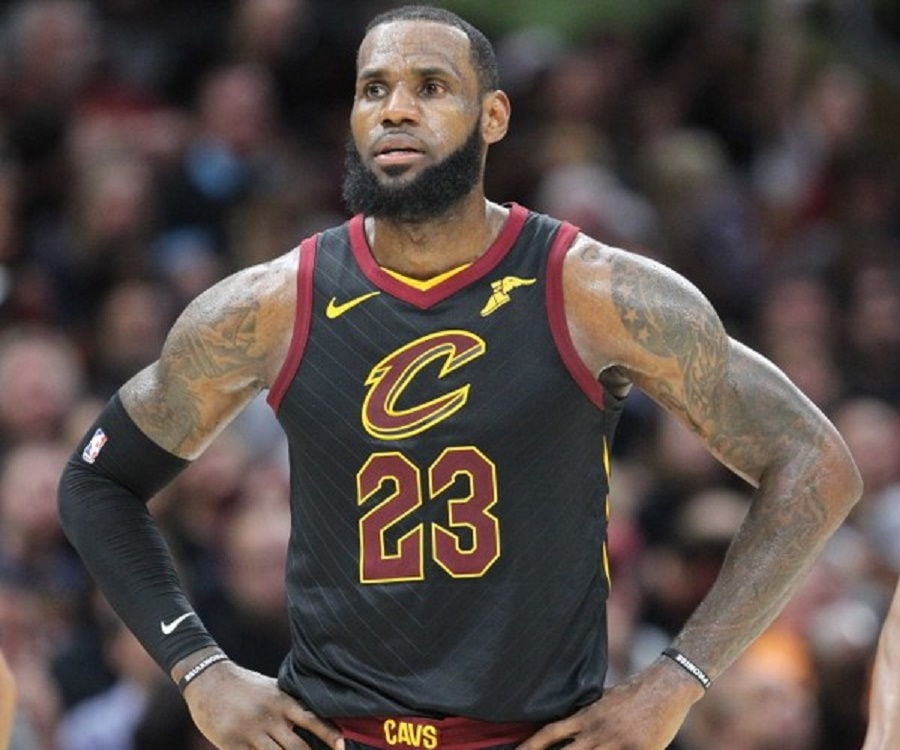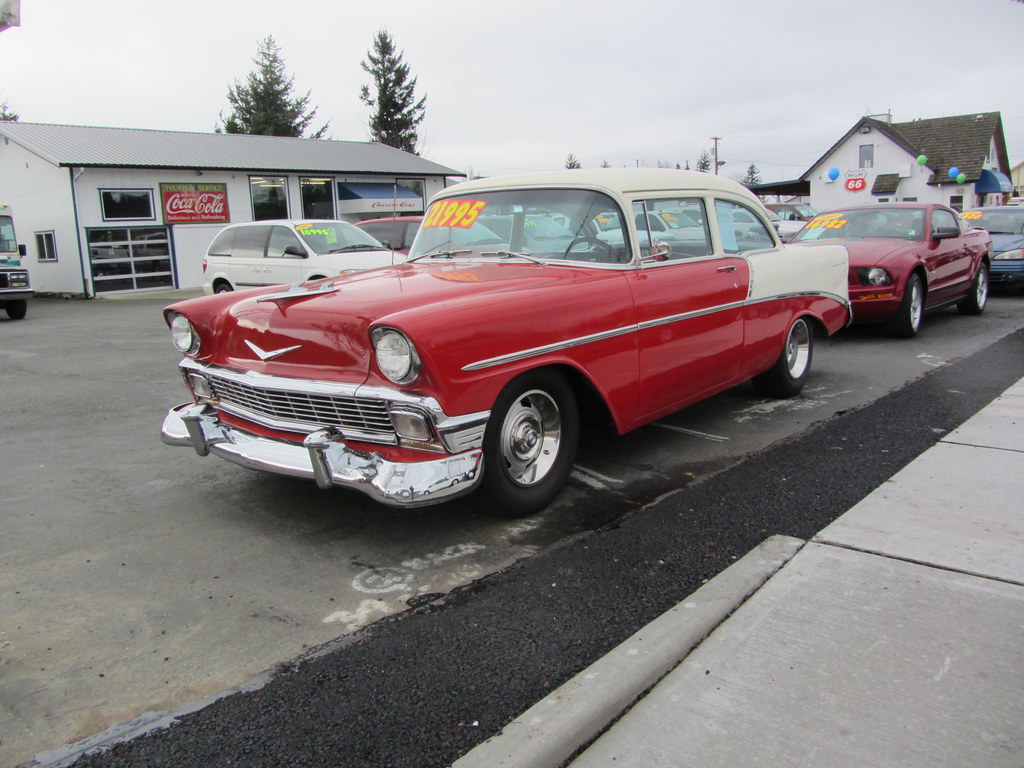
Rev up your curiosity, fellow automotive enthusiasts, as we steer through the fascinating stories of trailblazing automakers that once turned heads but ultimately disappeared from the road. Once upon a time, American roads were filled with the bold dreams of car brands whose names have since faded into obscurity. These companies didn’t just build vehicles; they pushed boundaries, introduced revolutionary features, and dared to challenge the status quo, leaving behind indelible marks on the cultural and engineering landscape.
Despite their innovative spirit and captivating designs, many of these iconic brands ultimately disappeared, leaving behind stories of ambition, ingenuity, and what could have been. Their legacies are not just found in dusty old manuals or forgotten showrooms, but in the very fabric of automotive evolution, influencing the cars we drive today and shaping the industry’s trajectory. It’s a journey filled with both triumphs and economic realities, a look back at the giants that once roamed our highways.
Join us as we embark on an in-depth exploration of 15 forgotten American car brands that vanished despite their innovation, each with a unique narrative of rise and eventual retreat. From pioneering luxury to democratizing advanced features, these brands held a meaningful place in the market and were often supported by vast dealership networks and a strong sense of familiarity. We’ll uncover how they carved out their niches, the revolutionary ideas they brought forth, and the often-complex reasons why their engines eventually fell silent.
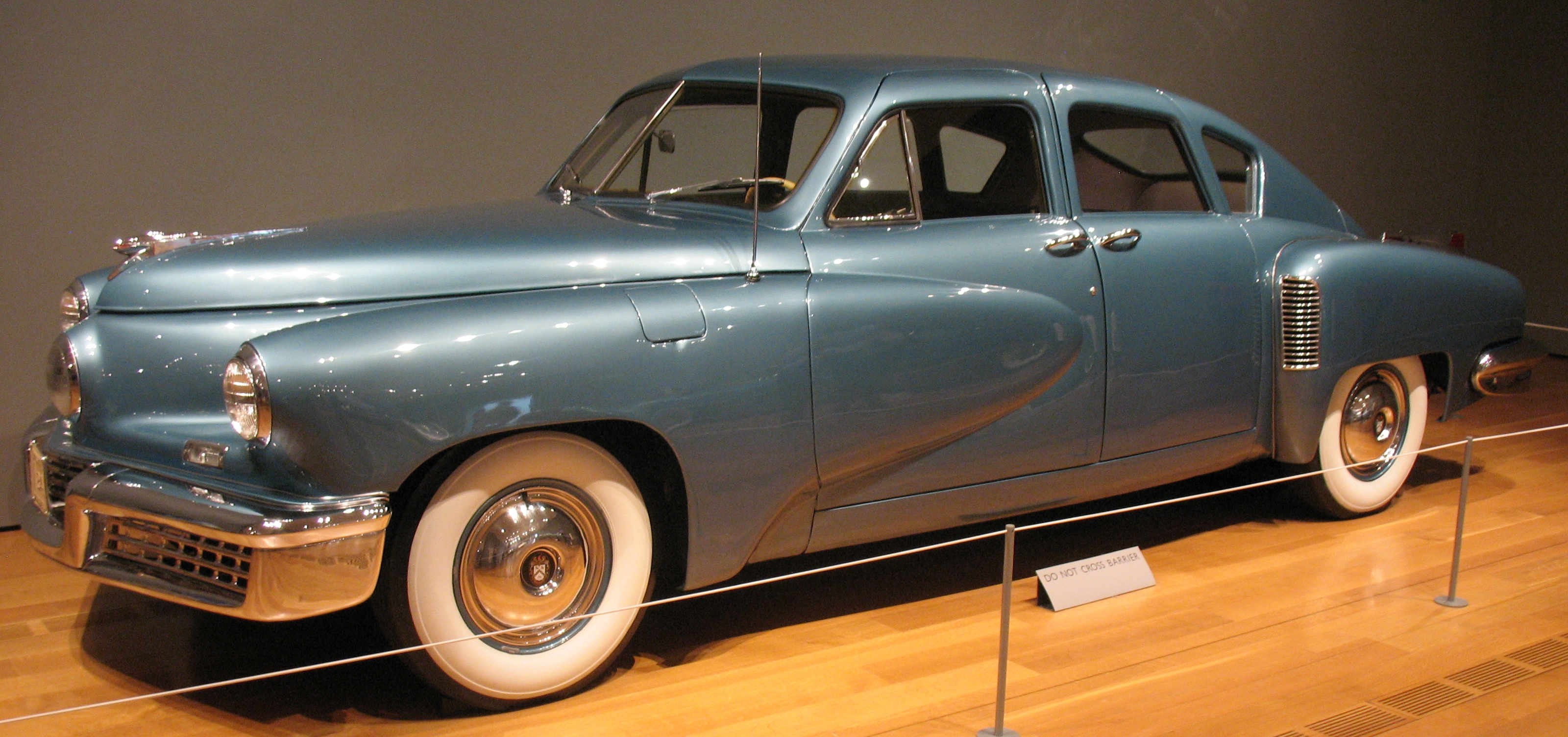
1. **Tucker: The Car That Was Years Ahead of Its Time**
The name Tucker often conjures images of unbridled ambition and visionary engineering, epitomizing a brand that dared to dream bigger than its contemporaries. In the late 1940s, the Tucker 48, famously known as the Tucker Torpedo, didn’t just captivate the automotive world—it electrified it with a suite of features that seemed plucked from a science fiction novel. Preston Tucker’s mission was crystal clear: to craft the safest and most advanced car of its day, a goal that resonated deeply with the public.
Imagine a vehicle boasting a rear-mounted engine for improved weight distribution and handling, coupled with a perimeter frame designed explicitly for enhanced crash protection. These were groundbreaking concepts at a time when safety was often an afterthought. But perhaps the most iconic feature, and certainly one that symbolized its forward-thinking design, was the revolutionary third “cyclops” headlight, which ingeniously pivoted with the steering wheel, illuminating corners before the car even turned.
While these radical ideas instantly attracted a legion of fans, they also drew the scrutiny and skepticism of the established Detroit automakers. Tucker’s audacious challenge to the status quo, along with a complex web of political and financial hurdles, unfortunately proved to be insurmountable. This combination of external pressure and internal struggles ultimately brought his ambitious company down, tragically cutting short its production after only 51 cars rolled off the assembly line.
Despite its remarkably short life and limited production numbers, the Tucker brand has cemented its place as an enduring icon of American automotive ambition. It remains a powerful symbol of daring innovation, a testament to what a single visionary could achieve. The Tucker Torpedo isn’t just a car; it’s a legend, celebrated for its pioneering spirit and for setting a benchmark that many believed was simply impossible at the time.
Car Model Information: 2023 Honda Civic EX
Name: Justin Tucker
Caption: Tucker in 2024
Position: Placekicker
BirthDate: [object Object]
BirthPlace: Houston
HeightFt: 6
HeightIn: 1
WeightLbs: 191
HighSchool: Westlake High School (Texas)
College: Texas Longhorns football
Undraftedyear: 2012
Pastteams: Baltimore Ravens
Highlights: Super Bowl champion,All-Pro,2017 All-Pro Team,Pro Bowl,National Football League 2010s All-Decade Team,Big 12 Conference,Longest NFL field goal: 66 yards
Statleague: NFL
Statseason: 2024
Statlabel1: Field goal (football)
Statvalue1: 417
Statlabel2: Field goals attempted
Statvalue2: 468
Statlabel3: Field goal %
Statvalue3: 89.1
Statlabel4: Points scored
Statvalue4: 1,775
Statlabel5: Longest field goal
Statvalue5: 66
Statlabel6: Touchbacks
Statvalue6: 756
Pfr: T/TuckJu00
Categories: 1989 births, All articles with unsourced statements, American Conference Pro Bowl players, American football placekickers, Articles with short description
Summary: Justin Paul Tucker (born November 21, 1989) is an American professional football placekicker. He played college football for the Texas Longhorns and signed with the Baltimore Ravens as an undrafted free agent in 2012, spending 13 seasons with the team. Regarded as one of the greatest placekickers ever, Tucker holds the NFL record for longest field goal at 66 yards and second in field goal percentage at 89.1%, only behind Cameron Dicker. He has also been named to seven Pro Bowls and five first-team All-Pros, and was a member of the Ravens team that won Super Bowl XLVII.
Get more information about: Justin Tucker
Buying a high-performing used car >>>
Brand: Tucker Model: Tucker 48
Price: $23,541 Mileage: 56,979 mi.
Read more about: I Miss These: 15 Iconic American Car Brands That Vanished From Our Roads

2. **Cord: Art Deco Innovation on Wheels**
Cord made an indelible mark on the automotive landscape with its striking Art Deco aesthetics and a relentless pursuit of cutting-edge technology. The brand’s vehicles, particularly the celebrated 810 and 812 models, were true marvels of their era. They showcased pioneering features like front-wheel drive, which was a rarity at the time, and revolutionary retractable headlights that offered both elegant design and improved aerodynamics.
These innovative elements allowed Cord vehicles to stand out dramatically in the 1930s, not just for their breathtaking looks but also for their advanced engineering. The cars were masterpieces of design, embodying a sophistication and modernity that spoke volumes about the brand’s artistic vision and technical prowess. They captured the imagination of a public eager for progress and style.
Yet, even such visionary design and engineering couldn’t shield Cord from the harsh economic realities of its time. The company faced severe financial troubles, exacerbated by the immense pressures of the Great Depression. These insurmountable challenges ultimately led to Cord’s demise in 1937, a sad end for a truly unique brand.
Today, Cord is rightfully celebrated as one of the most innovative and visually captivating automotive brands to ever grace American roads. Its vehicles are revered by collectors and enthusiasts alike, serving as timeless examples of how art and engineering can converge to create something truly extraordinary. The legacy of Cord continues to inspire, reminding us of a brief but brilliant chapter in automotive history.
Car Model Information: 1936 Cord 810
Caption: 1937 812 Sedan
Name: Cord 810/812
Manufacturer: Cord Automobile
Production: 1936–1937
ModelYears: 1936–1937
Engine: V8 engine
Layout: Front-mid-engine, front-wheel-drive layout
Categories: 1930s cars, All articles with unsourced statements, Articles with short description, Articles with unsourced statements from February 2023, Articles with unsourced statements from July 2013
Summary: The Cord 810, and later Cord 812, was a luxury automobile produced by the Cord Automobile division of the Auburn Automobile Company in 1936 and 1937. It was the first American-designed and built front wheel drive car with independent front suspension. It was preceded by Cord’s own 1929 Cord L-29, and the French 1934 Citroën Traction Avant front wheel drive cars, but the 810/812 was commercially less successful than these.
The Cord 810 and 812 were also the first production cars to feature hidden/pop-up headlights. Additionally, the radical new styling of its nose completely replaced the traditional radiator grille, in favor of horizontal louvers, that curved all around the sides of the nose, earning the car’s styling the nickname of ‘coffin nose’.
Get more information about: Cord 810/812
Buying a high-performing used car >>>
Brand: Cord Model: 810
Price: $49,950 Mileage: 0 mi.
Read more about: I Miss These: 15 Iconic American Car Brands That Vanished From Our Roads
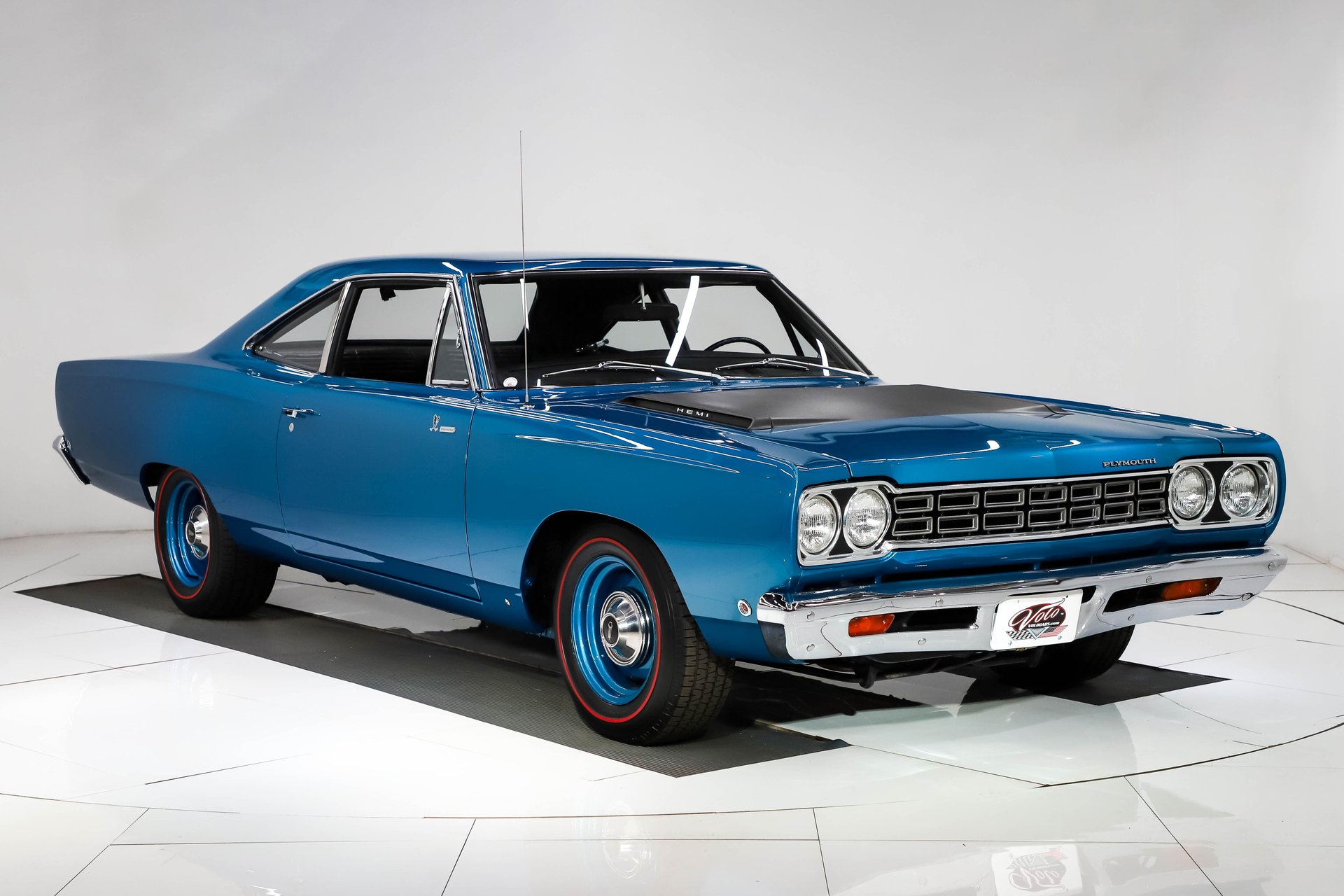
3. **Plymouth: The Everyman’s Innovator**
When Chrysler introduced Plymouth in 1928, its mission was clear: to offer value-oriented cars that didn’t skimp on features typically reserved for pricier models. This approach quickly made Plymouth a popular choice for families seeking reliability and practicality without breaking the bank. The brand was an early pioneer in democratizing advanced automotive technology, notably making hydraulic brakes widely available to the everyday driver, a significant leap in safety and performance for its time.
As the decades progressed, Plymouth continued to innovate, cementing its place in American automotive culture. The brand introduced iconic models that would go on to shape entire segments, such as the legendary Barracuda. This muscular machine was not just a car; it was a forerunner of the burgeoning muscle car movement, capturing the hearts of performance enthusiasts and defining an era of speed and style. Later, the Plymouth Road Runner would further solidify its reputation for affordable performance.
However, as Chrysler’s portfolio expanded, Plymouth’s identity began to blur, often struggling to differentiate itself from its sister brands, Dodge and Chrysler-branded vehicles. Its distinct role in the market became muddled, and without a strong, unique reason to stand out, consumer interest gradually cooled. What once made Plymouth a smart and steady choice began to fade, as overlapping models diluted its appeal and eroded its market share by the 1990s.
By 2001, the brand was quietly phased out, a casualty of shifting automotive trends, internal competition, and brand identity issues. Plymouth’s disappearance wasn’t a sudden collapse but a gradual retreat, ending a long history that, for decades, had represented a reliable, American, and accessible choice for countless families. While many drivers barely noticed its final departure, the brand’s significant contributions to making advanced features available to the masses are a testament to its enduring legacy.
Read more about: I Miss These: 15 Iconic American Car Brands That Vanished From Our Roads

4. **Packard: Luxury and Innovation in Every Detail**
Packard emerged as an undisputed leader in American luxury, a name synonymous with unparalleled elegance, exquisite craftsmanship, and groundbreaking technological advancements. For discerning buyers, a Packard wasn’t merely a car; it was a statement of prestige, setting itself apart with an engineering prowess that was second to none. The company consistently raised the bar for comfort and performance, pushing the boundaries of what was expected from a premium vehicle.
This commitment to innovation resulted in several industry firsts that underscored Packard’s visionary approach. They were responsible for introducing production air conditioning, a luxury feature that transformed cabin comfort and set new standards for passenger experience. Furthermore, the development of the Ultramatic automatic transmission showcased their engineering ingenuity, providing a smoother, more refined driving experience long before such advancements became commonplace.
Despite these remarkable milestones and a sterling reputation for quality, Packard’s fortunes began to decline significantly after World War II. The brand found itself struggling in an increasingly competitive luxury market, battling formidable rivals such as Cadillac and Lincoln. This post-war landscape, coupled with broader economic shifts, proved challenging even for a brand of Packard’s stature.
A troubled merger with Studebaker, intended to revitalize both companies, unfortunately failed to rescue the storied brand. By 1958, Packard gracefully exited the automotive scene, leaving behind a rich and celebrated heritage of elegance and innovation. Its vehicles are still cherished today by collectors, serving as tangible reminders of an era when American luxury cars were truly in a class of their own.
Read more about: I Miss These: 15 Iconic American Car Brands That Vanished From Our Roads

5. **Hudson: Racing into the Future**
Hudson carved out a distinctive reputation in the automotive world, particularly with the groundbreaking introduction of its “step-down” design in the 1948 Commodore. This revolutionary approach significantly improved both handling and safety by ingeniously lowering the car’s center of gravity. Such innovative engineering not only enhanced the driving experience but also set Hudson apart as a forward-thinking brand committed to both performance and occupant well-being.
Beyond its engineering marvels, Hudson also found considerable fame on the racetrack, dominating NASCAR in the early 1950s. The brand’s powerful and well-engineered vehicles proved their mettle in competition, solidifying Hudson’s image as a high-performance contender. These victories resonated deeply with enthusiasts, further cementing its legacy in the annals of American motorsport and showcasing its formidable capabilities.
Even with such compelling engineering strengths and a celebrated racing heritage, Hudson couldn’t withstand the relentless pressures of the industry’s rapid consolidation. The automotive landscape was quickly transforming, favoring larger entities with more expansive resources. This challenging environment made it difficult for independent manufacturers like Hudson to maintain their competitive edge and sustain operations.
After merging with Nash-Kelvinator to form American Motors, a strategic move aimed at survival, the Hudson name ultimately disappeared by 1957. Though the badge itself vanished, Hudson’s legacy in racing and design innovation remains vibrant. Its contributions to automotive history, particularly its “step-down” chassis and formidable track record, continue to be admired and remembered by enthusiasts worldwide.
Car Model Information: 1947 Hudson Commodore
Layout: Front-engine, rear-wheel drive layout
Manufacturer: Hudson Motor Car Company
Production: 1941–1942,1946–1952
Class: Full-size car
Caption: 1947 Hudson Commodore Convertible Brougham
Assembly: Detroit
Predecessor: Hudson Greater Eight
Categories: 1940s cars, 1950s cars, All articles needing additional references, Articles needing additional references from March 2021, Articles with short description
Summary: The Hudson Commodore is an automobile that was produced by the Hudson Motor Car Company of Detroit, Michigan between 1941 and 1952. During its time in production, the Commodore was the largest and most luxurious Hudson model.
Get more information about: Hudson Commodore
Buying a high-performing used car >>>
Brand: Hudson Model: Commodore
Price: $46,900 Mileage: 58,325 mi.
Read more about: I Miss These: 15 Iconic American Car Brands That Vanished From Our Roads

6. **Oldsmobile: The Pioneer of the Automatic Transmission**
Founded in 1897 by Ransom E. Olds, Oldsmobile stands as one of the oldest car manufacturers globally and a true trailblazer among American carmakers. The brand was a driving force behind several significant automotive breakthroughs, establishing an impressive legacy of innovation and reliability that resonated with a wide spectrum of buyers, from everyday drivers to those seeking a touch of luxury.
Oldsmobile is particularly renowned for pioneering the automatic transmission, introducing the revolutionary Hydra-Matic in 1940. This invention, alongside its iconic “Rocket” V8 engine, became industry staples, forever changing how Americans drove and how vehicles were designed. The brand continued its streak of innovation with models like the Toronado, which broke ground as one of the first American cars to feature front-wheel drive, showcasing its commitment to pushing technological boundaries.
Despite this illustrious and innovative legacy, Oldsmobile struggled to keep pace with rapidly changing consumer tastes and General Motors’ evolving priorities by the 1990s. Its image, once synonymous with progress, had become somewhat outdated, making it increasingly difficult to attract younger buyers. Sales began to decline, and the brand struggled to differentiate itself within GM’s vast portfolio, despite various efforts to revamp its product line.
Ultimately, declining sales and the inability to maintain a competitive edge led to its discontinuation in 2004, ending an era for a brand that had helped shape automotive history for over a century. Oldsmobile’s quiet departure, though sad for many, left behind a legacy of technological firsts and a quiet kind of respect, reminding us of a time when it truly represented progress and a step up for American drivers.
Read more about: I Miss These: 15 Iconic American Car Brands That Vanished From Our Roads
7. **Studebaker: From Wagons to Cutting-Edge Cars**
Long before it ventured into the realm of automobiles, Studebaker made a significant mark as a prominent wagon manufacturer in the 19th century, with its roots deeply embedded in American life. This heritage of craftsmanship and utility seamlessly transitioned as the company moved into building cars in the early 1900s. Studebaker quickly became known for its distinctive and forward-thinking designs, distinguishing itself from the burgeoning competition.
The brand consistently delivered vehicles that were both unique and technologically advanced for their time. Notable examples include the iconic bullet-nose Champion, whose sleek, aerodynamic styling captured the public’s imagination, and the revolutionary Avanti, which boasted fiberglass construction and advanced engineering. These models showcased Studebaker’s commitment to creativity and its willingness to embrace innovative materials and design philosophies.
Nevertheless, Studebaker faced an uphill battle against the mounting pressures of financial instability and the intense competition from Detroit’s formidable Big Three automakers. Despite its storied past and innovative products, the company struggled to keep pace with the shifting industry landscape and the deeper pockets of its larger rivals. Its market share began to shrink, and the brand gradually slipped from mainstream conversation.
By the 1960s, mounting losses unfortunately led to the company’s closure, bringing an end to the legacy of a brand that had once defined American creativity and craftsmanship. Studebaker’s disappearance was not a sudden failure, but rather a quiet turning of a page, yet its name still sparks memory among enthusiasts who appreciate its unique contributions to automotive design and its integral place in an earlier chapter of American history.
Read more about: I Miss These: 15 Iconic American Car Brands That Vanished From Our Roads
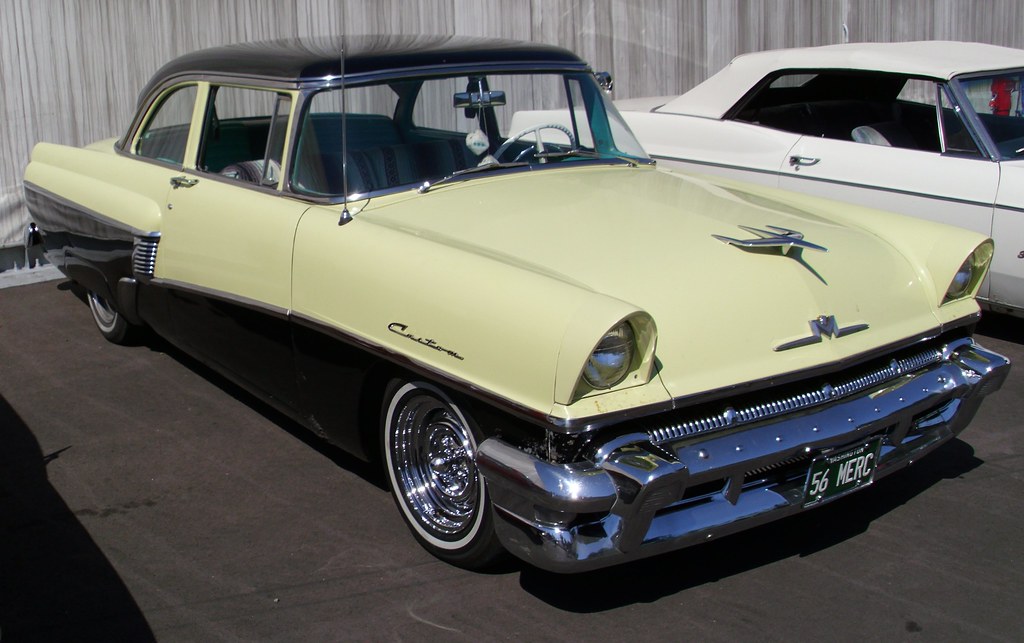
8. **Mercury: Ford’s Stylish Middle Child**
Ford Motor Company introduced Mercury in 1938 with a clear vision: to gracefully bridge the gap between its ubiquitous mainstream Ford vehicles and the pinnacle of luxury embodied by its Lincoln division. For decades, Mercury carved out a distinguished niche, offering buyers a step up in sophistication, styling, and features without demanding the premium price tag of a full-fledged luxury car. It was the perfect choice for those who sought comfort and flair, positioned just right in the American automotive hierarchy.
Mercury vehicles became known for their sleek aesthetics and memorable designs, capturing the essence of American automotive style. Icons like the Mercury Cougar, a powerful and popular pony car, and the innovative ‘Turnpike Cruiser’ dashboard, which boasted futuristic features for its time, truly defined the brand’s commitment to both elegance and modern amenities. These models resonated with a wide segment of the population, establishing Mercury as a trusted name for discerning drivers.
Yet, as the automotive landscape evolved, Mercury struggled to maintain its distinct identity within Ford’s expanding portfolio. Its role began to blur, often with many of its models becoming rebadged versions of Ford cars, diluting the unique appeal that once set it apart. This lack of differentiation, coupled with shifting consumer preferences, led to a steady decline in sales and an increasingly unclear market position.
Ultimately, with Ford deciding to streamline its offerings and focus on its core brands and burgeoning SUV segments, the difficult decision was made to cease Mercury production. The brand’s chapter closed in 2010, marking the end of a long run for a name that once embodied American flair and forward-thinking design, leaving behind a legacy of stylish cars that once held a meaningful place on our highways.
Read more about: I Miss These: 15 Iconic American Car Brands That Vanished From Our Roads
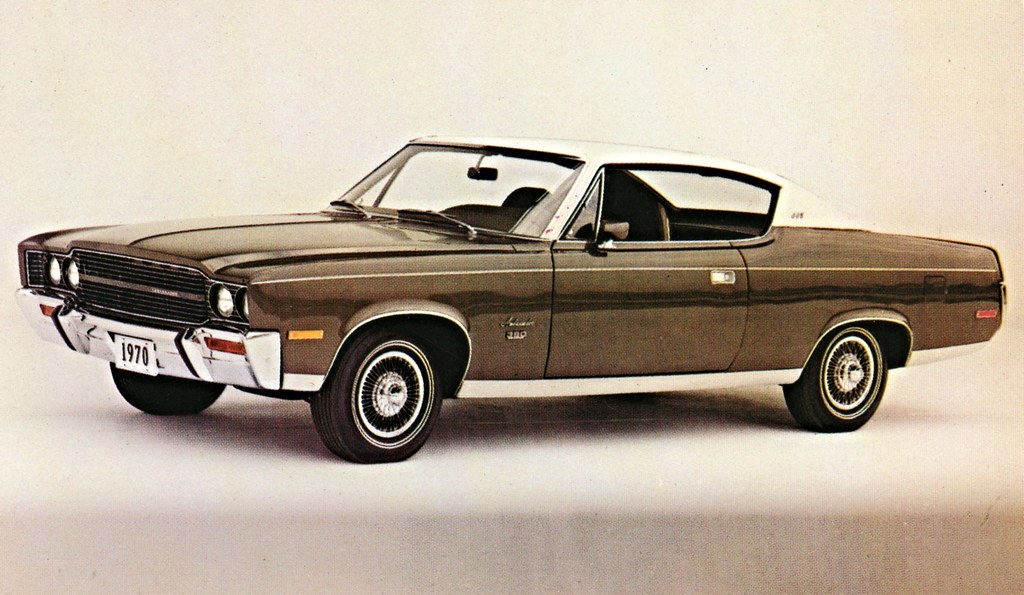
9. **AMC: The Quirky Challenger with Enduring Influence**
American Motors Corporation (AMC) emerged in 1954 as a true underdog, quickly earning a reputation for its unconventional thinking and willingness to challenge the industry giants. From the very beginning, AMC set itself apart by daring to be different, often bringing to market cars that were both unique and cleverly targeted to specific consumer needs. This inventive spirit allowed AMC to carve out a compelling niche, proving that innovation wasn’t exclusive to the biggest players.
AMC’s product lineup was a testament to its creative approach, responding ingeniously to the challenges of its times, including the impactful oil crisis. It gave us the compact and efficient Rambler, a sensible choice for families, and the rugged, go-anywhere Jeep brand, which it later acquired. But it also delivered truly quirky and memorable models like the Gremlin and the Pacer, cars that stood out for their distinctive personalities. Additionally, performance-oriented vehicles like the Rebel, AMX, and Javelin provided the brand with undeniable street credibility, showcasing its diverse capabilities.
Despite its inventive approach and passionate following, AMC faced an uphill battle against the sheer resources and market dominance of its larger rivals. The company struggled to match the expansive budgets and economies of scale of the ‘Big Three’ automakers, leading to insurmountable financial difficulties. Its momentum, though impressive, simply could not be sustained in such a fiercely competitive environment.
In 1987, Chrysler Corporation acquired AMC, primarily for the immensely valuable Jeep brand, which remains a powerhouse today. While the AMC name eventually faded from the automotive lexicon, its influence on car design and its legacy of risk-taking and originality endure. AMC cars, often seen as unconventional but smartly targeted, remind us of a time when thinking outside the box was a viable, if challenging, path to automotive success.
Read more about: I Miss These: 15 Iconic American Car Brands That Vanished From Our Roads
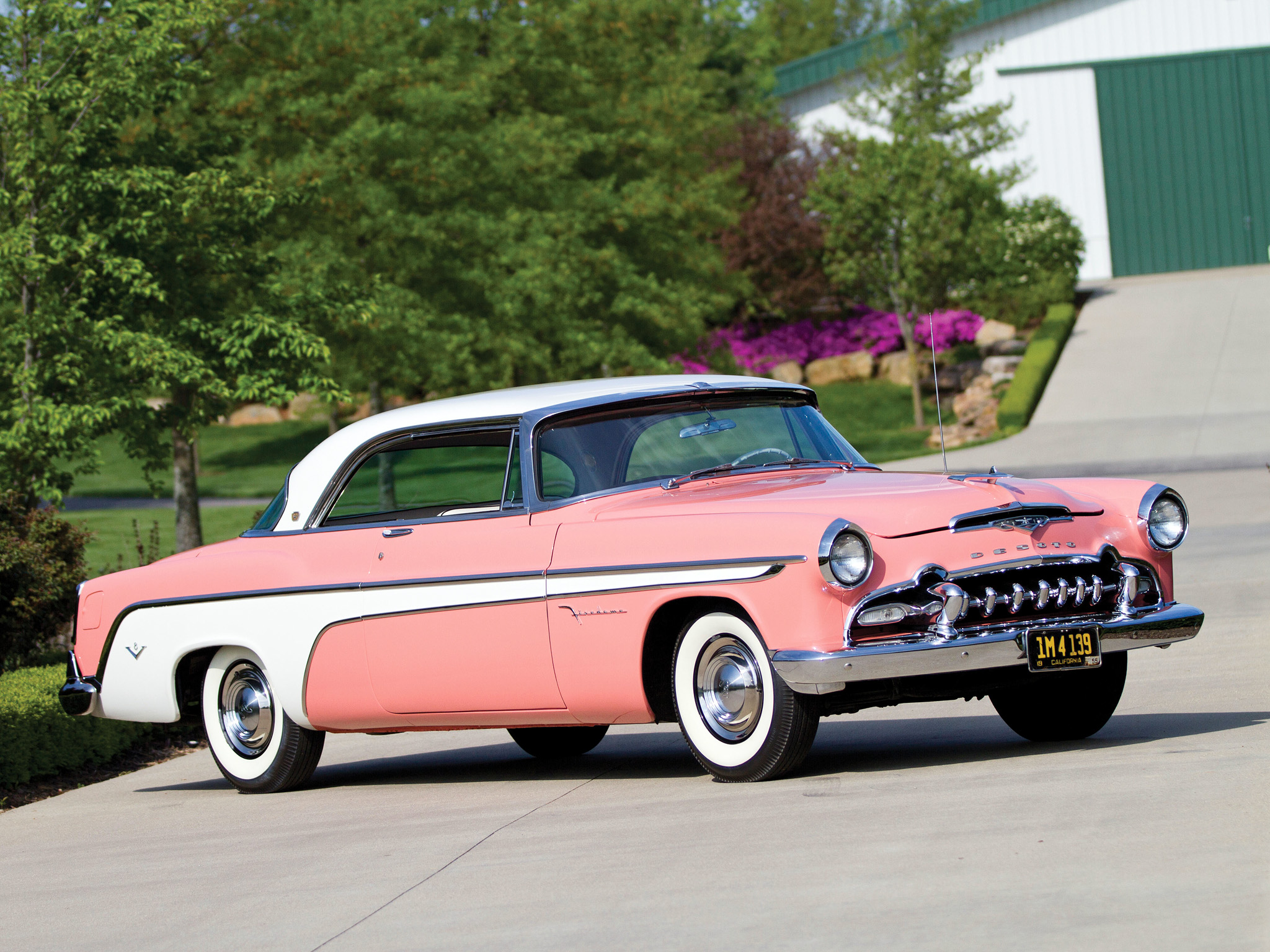
10. **DeSoto: Chrysler’s Stylish Trailblazer**
When Chrysler introduced DeSoto in 1928, it wasn’t just adding another nameplate; it was launching a brand designed to capture attention with a blend of style, affordability, and advanced engineering. DeSoto quickly established itself as a forward-thinking brand, offering vehicles that resonated with a public eager for progress and innovation. It promised a quiet elegance that appealed to buyers seeking something respectable, positioning itself perfectly between the basic offerings and the more extravagant options.
DeSoto was a true trailblazer, responsible for introducing several significant features that underscored its commitment to progress. Notably, it offered the first mass-produced power steering, a groundbreaking comfort and safety enhancement that would later become an industry standard. The brand also embraced futuristic designs that vividly captured the optimism and spirit of the 1950s, making DeSoto cars visually distinctive and technologically impressive for their era.
However, even with its innovations and unique appeal, DeSoto began to face increasing pressure from internal competition within Chrysler’s ever-expanding portfolio. As other Chrysler brands received more attention and new models started to overlap, DeSoto’s distinct role became harder to define. Shifting consumer tastes also played a role, with buyers gravitating towards more visible names, leading to a gradual decline in interest and fewer updates for DeSoto models over the years.
With sales steadily falling and its unique identity diluted, the difficult decision was made to discontinue the brand. DeSoto closed its book in 1961, bringing an end to a name that once stood for progress and ingenuity. Its final models came and went with little fanfare, but its legacy as a stylish, advanced, and quietly elegant brand remains, remembered by collectors and enthusiasts who appreciate its significant contributions to American automotive history.
Read more about: I Miss These: 15 Iconic American Car Brands That Vanished From Our Roads
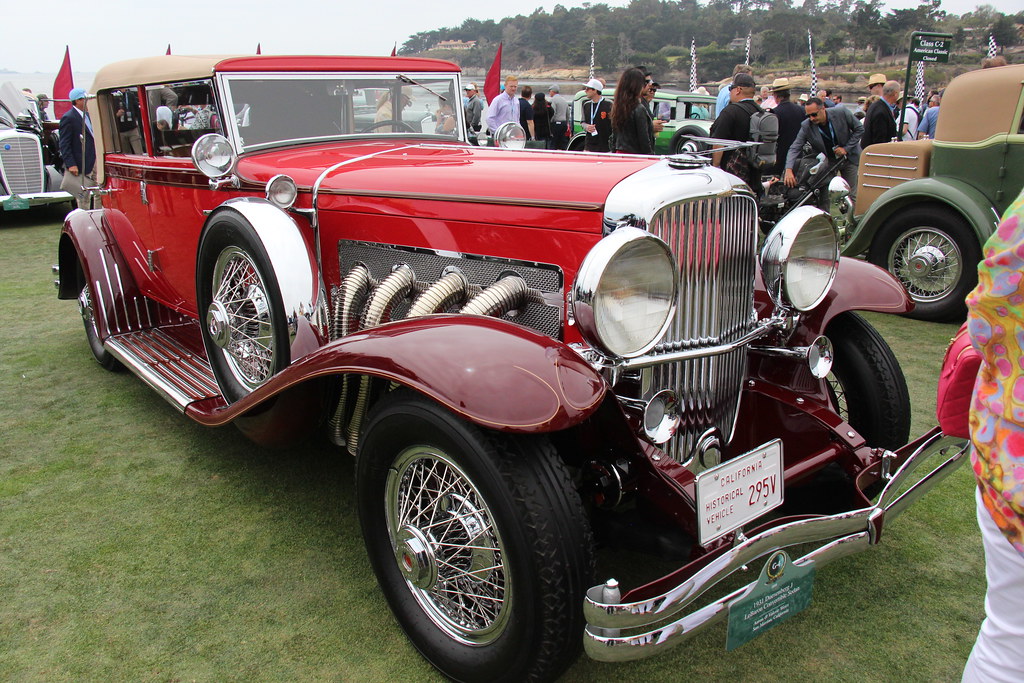
11. **Duesenberg: The Pinnacle of American Luxury**
Stepping back into the opulent world of the 1920s and 1930s, Duesenberg stands as arguably the ultimate symbol of American luxury and unparalleled performance. For those with the means, owning a ‘Duesy’ wasn’t just a matter of transportation; it was a profound statement of wealth, prestige, and discerning taste, embodying an era where craftsmanship and engineering were elevated to an art form. Every meticulously crafted vehicle was a masterpiece, pushing the boundaries of what was conceivable in automotive design.
Beyond their breathtaking aesthetics, Duesenberg cars were technological marvels, packed with innovations that set industry benchmarks. The brand introduced groundbreaking features such as supercharged engines, which delivered exhilarating power and speed, and advanced hydraulic brakes, significantly improving safety and control. Duesenberg relentlessly pushed the limits of engineering, creating vehicles that were not only beautiful but also formidable in their capabilities, truly pioneering advancements in performance and safety.
However, even a brand as revered and exclusive as Duesenberg could not escape the harsh realities of its time. The catastrophic onset of the Great Depression dramatically shrank the market for ultra-luxury vehicles. The extraordinarily high cost of Duesenberg’s meticulously handcrafted automobiles, combined with the economic downturn, proved to be an insurmountable challenge, leading to the company’s closure in 1937.
Despite its relatively short production run and exclusive clientele, the Duesenberg name has cemented its place in automotive lore. The term ‘Duesy’ remains a byword for excellence, luxury, and innovation, celebrated globally in the world of classic cars. These magnificent machines serve as timeless reminders of an era when American engineering and artistry combined to create vehicles of unmatched grandeur and pioneering spirit.
Read more about: I Miss These: 15 Iconic American Car Brands That Vanished From Our Roads
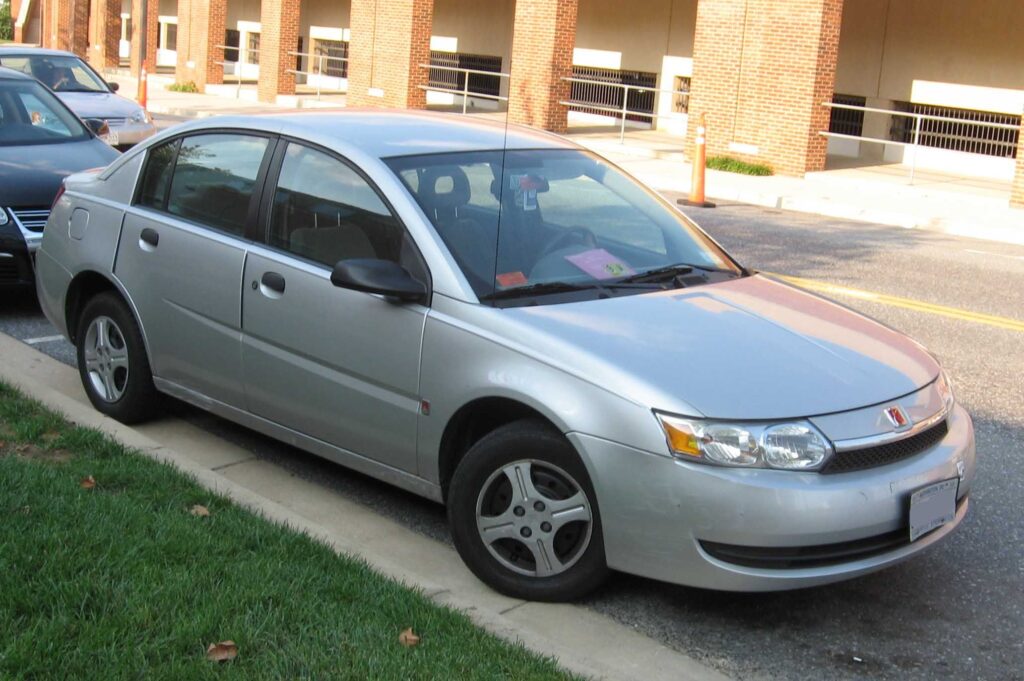
12. **Saturn: GM’s Bold Experiment in a ‘Different Kind of Car Company’**
Conceived by General Motors in 1985, Saturn embarked on an ambitious mission to revolutionize both car manufacturing and the car-buying experience in America. It was GM’s direct response to the increasing popularity of economical Japanese imports, aiming to attract a new generation of consumers with a fresh approach. Saturn promised a ‘different kind of car company,’ built on principles of no-haggle pricing, dent-resistant plastic body panels, and a customer-centric sales process that aimed to eliminate the traditional dealership anxieties.
This innovative strategy resonated strongly with a segment of the American public, and Saturn quickly gained a dedicated following. Early models, such as the Saturn SL and Saturn Ion, were praised for their affordability, fuel efficiency, and the straightforward buying experience. The brand successfully cultivated a loyal customer base, eager for an alternative to the conventional automotive landscape, and its unique approach seemed to signal a promising future.
Yet, despite its promising start and initial success, Saturn faced significant hurdles that ultimately undermined its long-term viability. The brand was often hampered by General Motors’ inconsistent support and a noticeable lack of sustained investment, which prevented its product lineup from evolving and staying competitive. Over time, Saturn’s distinctiveness began to erode; its models started to resemble other GM offerings, and the unique buying experience lost its initial charm.
By 2010, amid GM’s broader financial struggles and bankruptcy restructuring, the decision was made to discontinue Saturn. The brand, which had arrived with a clear mission and a bold vision, departed without much resistance, marking the end of a brave experiment in the American auto industry. While Saturn’s direct impact was fleeting, its attempt to redefine the car ownership experience leaves a noteworthy chapter in the story of American automotive innovation.
Read more about: Remember These? 14 Legendary American Car Brands That Drove Off Into The Sunset (And Why!)
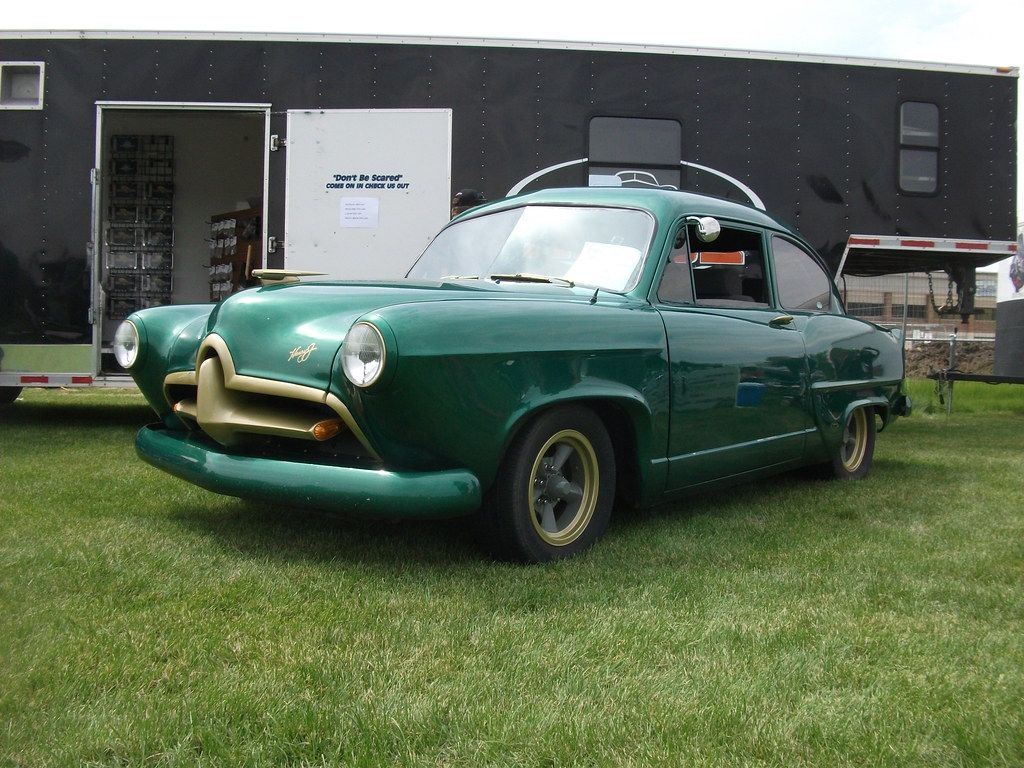
13. **Kaiser-Frazer: Postwar Promise and Unusual Designs**
Rising confidently from the ashes of World War II, Kaiser-Frazer emerged as a hopeful player in an America eager for new vehicles. Founded by industrialist Henry J. Kaiser and automotive executive Joseph W. Frazer, the company aimed to meet the surging postwar demand with innovative and accessible cars. It represented a bold new chapter in American manufacturing, promising a fresh perspective on vehicle design and production in a rapidly rebuilding nation.
Kaiser-Frazer distinguished itself by rolling out affordable models that captured public attention, such as the compact Henry J, designed for economy and practicality. More notably, it produced the eye-catching Kaiser Darrin sports car, a truly unique vehicle that boasted pioneering fiberglass construction and distinctive sliding doors. These bold design choices and material innovations showcased Kaiser-Frazer’s adventurous spirit and its willingness to embrace the unconventional in pursuit of a competitive edge.
However, the nascent company faced immense struggles against the entrenched power and vast resources of established rivals like the ‘Big Three’ automakers. Despite its innovative products and an initial wave of enthusiasm, Kaiser-Frazer found itself with limited financial resources, making it exceedingly difficult to compete on scale, marketing, and dealership networks. The competitive pressures of the mid-1950s proved overwhelming.
Ultimately, production for Kaiser-Frazer ended in the mid-1950s, bringing a premature close to its ambitious journey. While the brand itself vanished, its adventurous spirit and unique designs, particularly the iconic Kaiser Darrin, are still admired by collectors and enthusiasts today. Kaiser-Frazer remains a testament to the post-war entrepreneurial zeal and the challenges faced by smaller manufacturers in a rapidly consolidating industry.
Read more about: I Miss These: 15 Iconic American Car Brands That Vanished From Our Roads
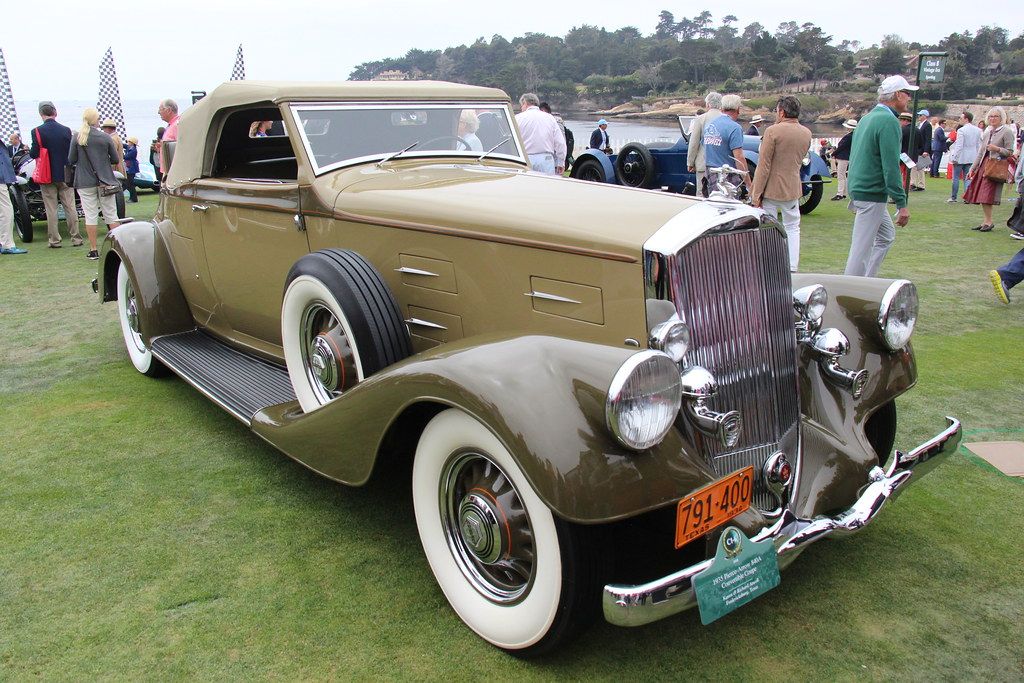
14. **Pierce-Arrow: The Aristocrat’s Choice**
In the early 20th century, the name Pierce-Arrow was synonymous with the zenith of American luxury and advanced engineering, catering exclusively to the nation’s elite. A Pierce-Arrow automobile wasn’t merely a mode of transport; it was a grand declaration of status, refinement, and impeccable taste. The brand meticulously crafted vehicles that embodied a quiet confidence, setting itself apart through unparalleled quality and an unwavering commitment to cutting-edge technology, defining what it meant to drive a premium American car.
This dedication to innovation led Pierce-Arrow to introduce features that were far ahead of their time, further solidifying its reputation as a leader in automotive advancement. The company was responsible for pioneering power brakes, a significant enhancement to driver control and safety, and also utilized lightweight aluminum bodies, showcasing an early understanding of performance efficiency. These advancements underscored Pierce-Arrow’s role in pushing the boundaries of engineering and setting new standards for luxury vehicle performance and comfort.
Despite its sterling reputation for quality and its loyal, affluent customer base, Pierce-Arrow could not withstand the devastating economic downturn of the 1930s, particularly the Great Depression. The market for ultra-luxury automobiles contracted dramatically, and even the most prestigious brands found themselves fighting for survival. The prohibitive cost of producing such exquisitely engineered and handcrafted vehicles became unsustainable in the face of dwindling demand.
Tragically, the company closed its doors in 1938, marking the end of an illustrious era. Today, Pierce-Arrow vehicles are still revered by collectors and automotive historians for their magnificent craftsmanship, their pioneering spirit, and their undeniable beauty. They serve as tangible reminders of a glorious chapter in American automotive history, when elegance, luxury, and engineering converged to create truly unforgettable machines.
Read more about: I Miss These: 15 Iconic American Car Brands That Vanished From Our Roads

15. **Hupmobile: The People’s Car with Big Ideas**
Hupmobile, founded in 1908, skillfully carved out a significant niche in the burgeoning American automotive market by offering cars that were not only affordable and reliable but also infused with a surprising commitment to innovation. It was a brand that understood the needs of the everyday driver, delivering practical transportation while simultaneously embracing forward-thinking design and engineering principles. Hupmobile quickly gained a reputation for providing honest value without sacrificing progress.
The brand was among the first to introduce groundbreaking features that would eventually become industry standards. Hupmobile was a pioneer in offering all-steel bodies, a significant advancement in vehicle safety and durability, long before many of its competitors. Furthermore, in the 1930s, the company was quick to embrace aerodynamic styling, setting aesthetic trends that many others would soon follow. These contributions underscored Hupmobile’s role as a true innovator, proving that big ideas could come from accessible brands.
Nevertheless, even Hupmobile’s blend of affordability, reliability, and innovation couldn’t insulate it from the formidable economic challenges and the relentless, growing competition of the era. The automotive landscape was rapidly evolving, with larger manufacturers achieving economies of scale and offering increasingly diverse product lines. Despite its early achievements and a loyal customer base, Hupmobile found it increasingly difficult to compete on an even footing.
By 1940, Hupmobile was regrettably forced to leave the market, bringing an end to a brand that had left an indelible mark on automotive design and accessibility. While the Hupmobile name has largely faded from mainstream memory, its influence on automotive development, particularly in safety and styling, lives on. It stands as a compelling example of how a ‘people’s car’ could also be a vessel for significant engineering and design progress.
Where The Road Ended: A Legacy That Endures
Our journey through the annals of vanished American automotive brands has been a poignant reminder that the highway of innovation is often fraught with unexpected turns and sudden stops. Each of these storied names, from Mercury’s stylish middle ground to AMC’s quirky defiance, DeSoto’s quiet elegance, Duesenberg’s opulent grandeur, Saturn’s bold experiment, Kaiser-Frazer’s postwar ambition, Pierce-Arrow’s aristocratic refinement, and Hupmobile’s pioneering spirit, earned its place by speaking directly to the American driver of its time. They weren’t just cars; they were integral parts of our cultural fabric, symbols of ambition, and reflections of the era in which they thrived.
None of these brands disappeared overnight, like a sudden flat tire. Instead, their departure was often a gradual fading, a quiet turning of a page as tastes shifted, competition intensified, or corporate strategies evolved. They had a real and tangible presence for years, filling driveways, gracing magazine ads, and sparking weekend conversations, before eventually receding into history, making way for the next wave of automotive dreams.
Read more about: I Miss These: 15 Iconic American Car Brands That Vanished From Our Roads
Today, their legacies live on, not just in the hushed conversations of collectors or the pages of dusty service records, but in the very memory of American driving. They are preserved in the unique designs that still captivate, the engineering feats that influenced generations, and the stories passed down through families. These brands, though no longer in showrooms, continue to hold a significant place in the narrative of how America drove forward, reminding us of the industry’s dynamic nature and the enduring power of automotive heritage. They serve as a testament to the fact that even when a brand drives into the sunset, its influence can forever illuminate the road ahead.


